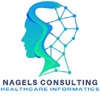Medical Imaging Informatics stands at the forefront of technological advancements, pivotal in transforming the landscape of radiology practice. In recent years, integrating information technology with medical imaging has significantly enhanced diagnostic accuracy, streamlined workflows, and improved patient care. Certified Imaging Informatics Professional is an expert in managing and integrating medical imaging information and technology within healthcare systems.
Overview of Medical Imaging Informatics
Medical Imaging Informatics refers to applying informatics concepts and tools to medical imaging. It encompasses acquiring, storing, retrieving, distributing, and analyzing medical images and associated patient information. Integrating informatics in medical imaging has led to the creation of Picture Archiving and Communication Systems and Radiology Information Systems (RIS), forming the backbone of modern radiology departments.
Key Components:
1. Picture Archiving and Communication System (PACS)
PACS is a cornerstone of Medical Imaging Informatics. PACS training allows healthcare providers to store, retrieve, and distribute medical images digitally. This eliminates the need for traditional film-based systems, streamlining the radiology workflow and facilitating remote access to images.
2. Radiology Information System (RIS)
RIS complements PACS by managing patient information and radiology department workflows. It includes functionalities such as appointment scheduling, patient tracking, and result reporting, contributing to improved operational efficiency.
3. Electronic Health Records (EHR)
Integration with EHR systems ensures seamless communication between different healthcare departments. Radiologists can access patient data, medical history, and previous imaging studies, enabling comprehensive and informed diagnostic decisions.
Streamlining Workflow with PACS
PACS has revolutionized managing medical images. Traditional film-based imaging has given way to digital formats, allowing for seamless image storage, retrieval, and sharing. PACS enables radiologists to access patient images from any location, fostering collaboration and timely decision-making. This digital transition has reduced the dependency on physical storage space and significantly accelerated the diagnostic process.
Enhancing Communication through RIS
Radiology Information Systems (RIS) complement PACS by managing administrative and business aspects of radiology departments. RIS ensures efficient workflow management, from patient scheduling and billing to tracking radiological procedures. Integrating RIS with PACS creates a comprehensive solution that streamlines communication between radiologists, technicians, and other healthcare professionals, improving coordination and patient care.
Artificial Intelligence in Medical Imaging
The Artificial Intelligence (AI) integration has further elevated the capabilities of Medical Imaging Informatics. AI algorithms are adept at image analysis, aiding radiologists in detecting abnormalities, predicting disease outcomes, and even automating repetitive tasks. Machine learning algorithms learn from vast datasets, improving their accuracy and efficiency. This enhances diagnostic precision and allows radiologists to focus more on complex cases, ultimately improving patient outcomes.
Advancements in 3D Imaging
The evolution of Medical Imaging Informatics has paved the way for advanced 3D imaging techniques. Three-dimensional reconstructions provide a more comprehensive view of anatomical structures, aiding in the diagnosis and treatment planning of intricate cases. This capability is precious in specialties like orthopedics, cardiology, and neurology, where detailed spatial information is crucial for accurate assessments.
Data Security and Privacy
As the use of medical imaging data grows, ensuring patient information security and privacy becomes paramount. Medical Imaging Informatics addresses these concerns through robust encryption protocols, access controls, and adherence to regulatory standards. This safeguards patient data and instills trust in the healthcare system.
Medical Imaging Informatics has emerged as a cornerstone of modern radiology practice, reshaping how medical images are acquired, stored, and interpreted. Medical Imaging Informatics has an essential role in Healthcare. The integration of PACS, RIS, AI, and 3D imaging has propelled the field toward unprecedented efficiency and accuracy. As technology advances, the possibilities for further innovations in Medical Imaging Informatics promise continued improvements in patient care and diagnostic capabilities.


No comments yet